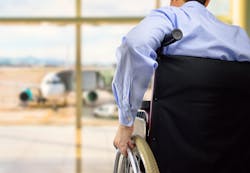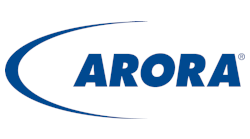Arora Engineers Inc. Contributes to Enhanced Airport Wayfinding for the Elderly and Disabled
Arora Engineers Inc. was proud to be on the research team of Gresham, Smith and Partners’ (GS&P) latest report concerning the best wayfinding practices for airports. GS&P published their third report on enhancing airport wayfinding entitled: Airport Cooperative Research Program (ACRP) Research Report 177: Enhancing Airport Wayfinding for Aging Travelers and Persons with Disabilities.
ACRP Research Report 177 investigates the complex challenges that aging travelers and people with disabilities face when navigating through an airport. This report seeks to provide the information necessary to allow these travelers to complete their journeys with dignity, and as independently as possible. Therefore, it informs airports and their stakeholders on the availability of innovative solutions to facilitate accessibility for passengers who have a variety of challenges.
The report offers airports a comprehensive guide to implementing an extensive wayfinding system that supports these passengers and provides them with the information they need, when they need it. According to GS&P, “During this research, the team developed a first-of-its-kind Wayfinding Accessibility Audit Checklist to help airports identify gaps in each of the customer journey segments. This checklist forms a matrix for various types of communications mapped to the types of disabilities accommodated, along with any known standards or additional guidance available.”
The research team also explored the growing use of technology and mobile applications in airport wayfinding, and found that most mobile apps are not designed to accommodate travelers with disabilities. The report now offers another first-of-its-kind set of principles and a “Do’s and Don’ts” list for developers to help them design complete mobile apps that all passengers can utilize effectively.
Arora provided insight and guidance into technology systems to enhance wayfinding, including accessible websites, accessible help/call points, interactive kiosks and interactive wayfinding displays, dynamic wayfinding directories, flight information displays, hearing/inductive loop systems, visual paging, and mass notification systems. Each technology includes an overview of the system and its relevance to aging adults and persons with disabilities, an application guide, a hardware and software components guide, and an implementation guide. The technology section of the report is written such that a reader can easily digest the requirements and apply to each system with an understanding of what it will take to implement that system.
The philosophy behind this research project was the concept of universal design, or the idea that we can design environments that, to the greatest extent possible, are usable for everyone. This concept moves the design process past the realm of legal standards and minimum requirements, and seeks to enhance the passenger experience for all individuals. Arora was proud to contribute to this guidebook and hopes that it assists airports in rethinking their infrastructure to better serve all passengers.
Some findings from this study were recently presented on Feb. 28, at the AAAE/ACC Airport Planning, Design and Construction Symposium in Denver, Colorado on the panel discussion “Where’s My Gate?” moderated by Manik Arora, PE, President & CEO.





